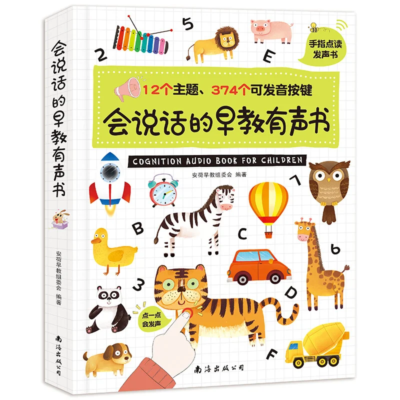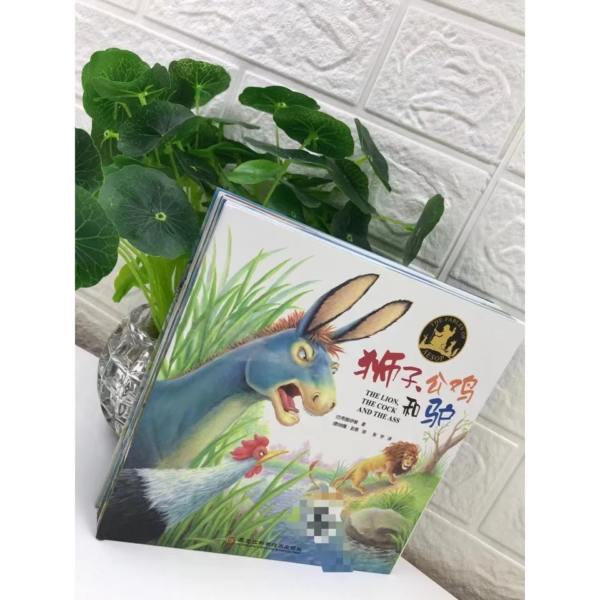Why Chinese Storybooks are Still the Best Way to Learn Mandarin for Kids
Why Chinese Storybooks are Still the Best Way to Learn Mandarin for Kids

When it comes to learning Mandarin to improve children’s skills, teachers and parents are expected to expand their creativity to craft the best learning experiences. As children are naturally curious learners that are prone to boredom, implementation of engaging and creative activities remain important. One of the most recommended ways to keep an engaging learning environment is by incorporating Chinese bilingual storybooks to help boost children’s skills. Aside from learning how to read, implementing Chinese storybooks for your kids’ learning can also help children in learning other basic language skills. To learn more about how Chinese storybooks can improve children’s language ability, let’s read through this article.
Why Chinese Story Books Are Perfect for Building Mandarin Skills in Kids

One prominent benefit of learning through Chinese storybooks is undoubtedly encountering new vocabulary as you go through the stories. Although it is mainly known for its utilization of enhancing vocabulary absorption, Chinese storybooks can also help building children Mandarin skills in different ways as the following.
Listening Skills
This skill is especially important if you’re planning to start your kids’ learning journey with verbal communication. Listening skills have long been known for the foundation of communication and therefore is suitable as a starting point. Utilizing Chinese storybooks using this method can be achieved by reading the stories out loud for children to hear. This method can be effective to help children understand the basics of Chinese pronunciation.
Reading Skills
This objective can be achieved if children can read or recognize Chinese characters in the books. Implementing Chinese storybooks into Mandarin learning can help children to introduce essential vocabulary as a robust foundation for language acquisition. The benefit of utilizing Chinese storybooks doesn’t stop at its ability to encourage children to recognize Mandarin vocabulary, but also motivates kids to increase comprehension in understanding written text.
Speaking Skills
This skill is another important part of verbal communication. While learning with Chinese storybooks, you can encourage your children to improve their speaking skills by listening to story audio and repeating it as closely as possible. To give a better learning experience, you can also further enhance their speaking skills by correcting any mispronunciation along the way.
Writing Skills
Writing skills can usually be achieved after children get familiar with reading Chinese storybooks. It is recommended that kids have a basic understanding of common Mandarin vocabulary beforehand to help them recognize Chinese characters for practice. If your children have no foundation in Mandarin, you can start by encouraging them to rewrite Chinese characters with a minimal number of strokes to help them grasp the basics of the writing system in Mandarin.
Learning Mandarin through Chinese Storybooks: Does Age Matter?

When it comes to learning Mandarin for children, there is no exact age to start. However, a lot of sources have recommended starting Mandarin learning for children as early as possible as their brain development is still at peak condition. Learning resources available for young children are sometimes targeted for children as young as 3 years old. This age is considered to be a prime time for kids to retain their memory better.
While learning Mandarin can start at any age as you please, it is important to take note that different groups of ages have different capacities in learning. If you’re planning to implement Chinese storybooks to children’s learning journey, their age should still be taken into account. Here is a quick guide on how to utilize Chinese storybooks properly based on your children’s age.
Age 3-6

Children within this age group are usually pre-schooler that have not received formal education at primary level. For these younger learners, comprehending a whole Chinese storybook might be overwhelming. Instead of forcing them to read a book that is fully filled with Chinese characters, you can try focusing on Chinese storybooks that emphasize more on colorful illustrations and repeated vocabulary for spaced repetition. Alternatively, you can also further enhance your teaching method by using audio interactive Chinese storybooks to maximise usage.
Age 7-9
Children in the early age of primary school have a better learning capacity than pre-schoolers. The biggest difference when it comes to utilizing Chinese storybooks can be seen through their ability to recognize text better. At this age, you can try giving your children slightly more advanced learning materials. For example, the Chinese storybooks that you use can have less repeated words. In replacement, you can try finding bilingual books that have both English and Mandarin versions to help children understand new vocabulary that they encounter along the way.
Age 10 and Above
Children in upper primary have a better understanding of written text format. While kids above the age mentioned are probably still far away from mastering Mandarin flawlessly, you can try giving them Chinese storybooks with longer narratives.
The Best Chinese Bilingual Storybooks to Improve Children’s Mandarin Skills

When it comes to learning Chinese as a second language, a successful tool that you can try to utilize is bilingual storybooks. Finding the best Chinese bilingual storybooks might be challenging if you’re not familiar with the sources and locations. Thankfully, finding Chinese bilingual storybooks these days is rather easy. Instead of having to find a local bookstore, parents can simply browse through online stores to find Chinese bilingual storybooks to help your children have a stronger Mandarin foundation. Here’s a few Chinese bilingual storybooks from Elite Kid that you can consider buying.
- Aesop’s Fable
Fables are one of the most common storybooks for young children to read. This story offers a light plot with animals as the main characters. These animals are often portrayed with human-like characteristics. Aesop is one of the most popular storytellers focusing on fables, with over 600 short stories with moral lessons. From all his popular writings, one of them is The Lion, The Cock, and The Ass. This fable bears the moral of not having false confidence as it can lead to many danger exposure.
Learn more about how you can get Aesop’s Fable by visiting this link
- Snow White
This classical tale is well known due to its adaptation as an animated movie. With a familiar story of a princess eating a poison apple, Snow White can be one of the options you can offer to your children. Bearing the moral story of kindness and inner beauty, this Chinese bilingual storybook is suitable for those around primary school level.
- The Ugly Duckling
This fable is another perfect example that you can utilize to help your kids learn Mandarin. This story follows a little duckling that gets rejected by others due to its difference. As the story progresses with how the duckling feels isolated from the world, it finally grows into a beautiful swan that captivates many hearts. Aside from helping children build confidence in oneself,
- The Frog Prince
This Chinese bilingual storybook is ideal to learn conversational skills with its dialogue from the plot. This tale covers the story of a princess that reluctantly befriends a frog after the small creature has helped her retrieve her lost golden ball. As they grow closer, the frog transforms back to its original form, a prince that was bound by curse. Aside from helping improve your children’s Mandarin skills, this story offers the moral of fulfilling promise and the importance to not judge something solely by its appearance.
Learn more about Snow White, The Ugly Duckling, The Frog Prince, and similar Chinese bilingual storybooks for kids by visiting this link.
Chinese Storybooks Fun Learning with EliteKid
Learning with Chinese storybooks is one of the many ways that you can try to help your children engage actively while learning Mandarin. Despite its effectiveness, a lot of parents that are not based in China can sometimes find difficulty in selecting and purchasing the right Chinese storybooks. Aside from finding your own, another alternative that you can try is by enrolling your children to a Mandarin course that can fit their needs. With this alternative, you will not only help your children to find the best reading resources, but also help them by connecting them with experienced teachers. Learn more about our curriculum by visiting our site.





